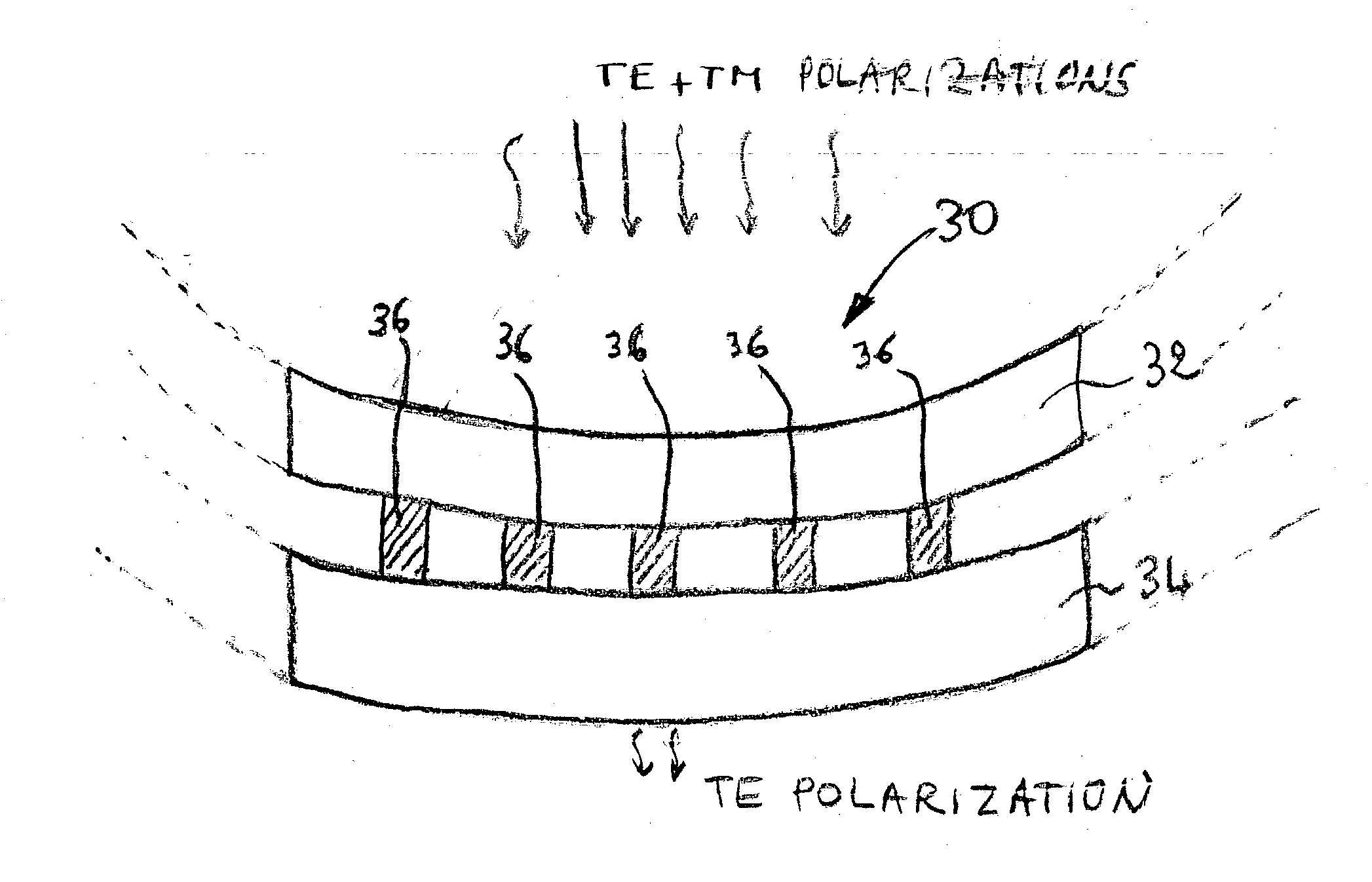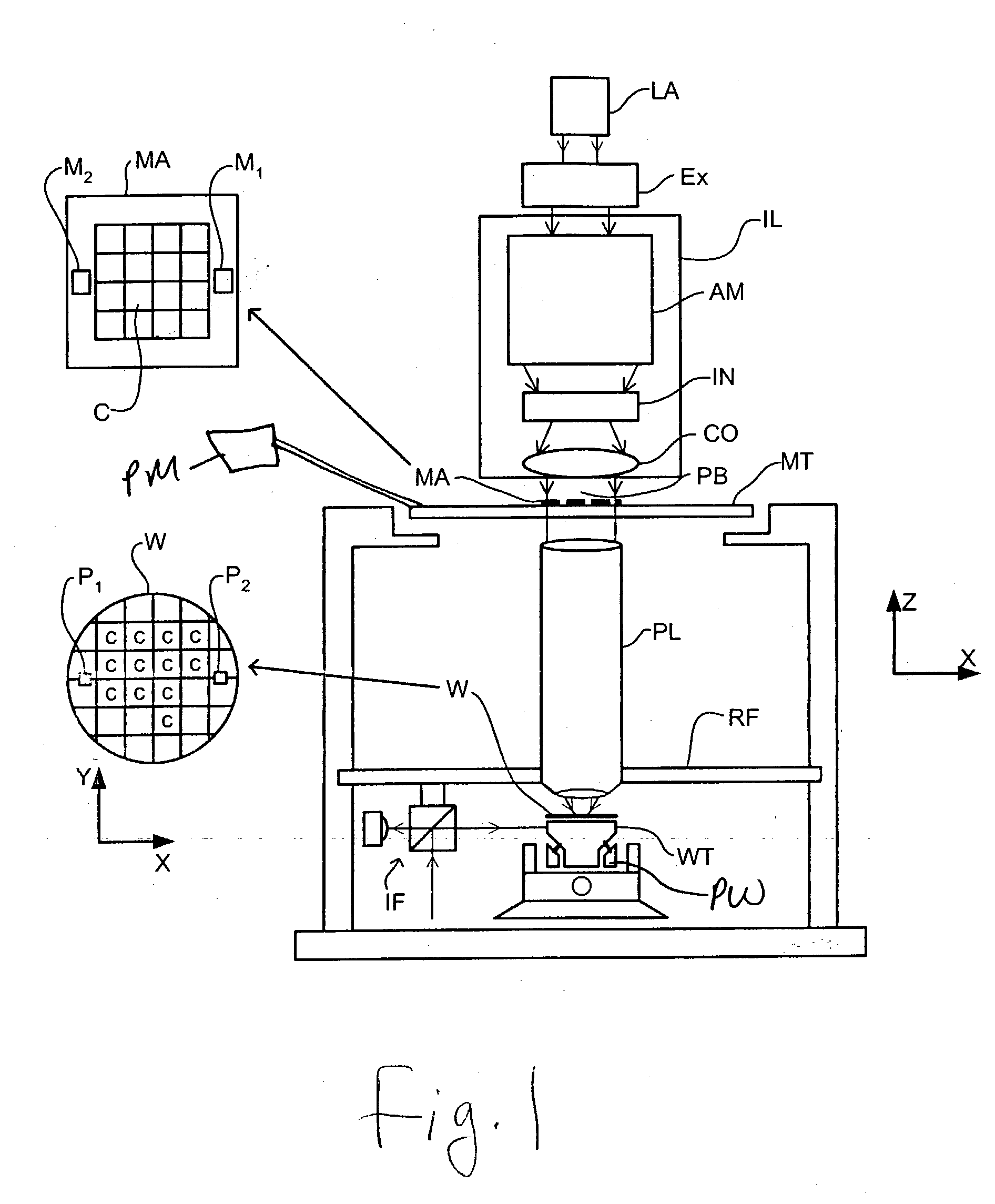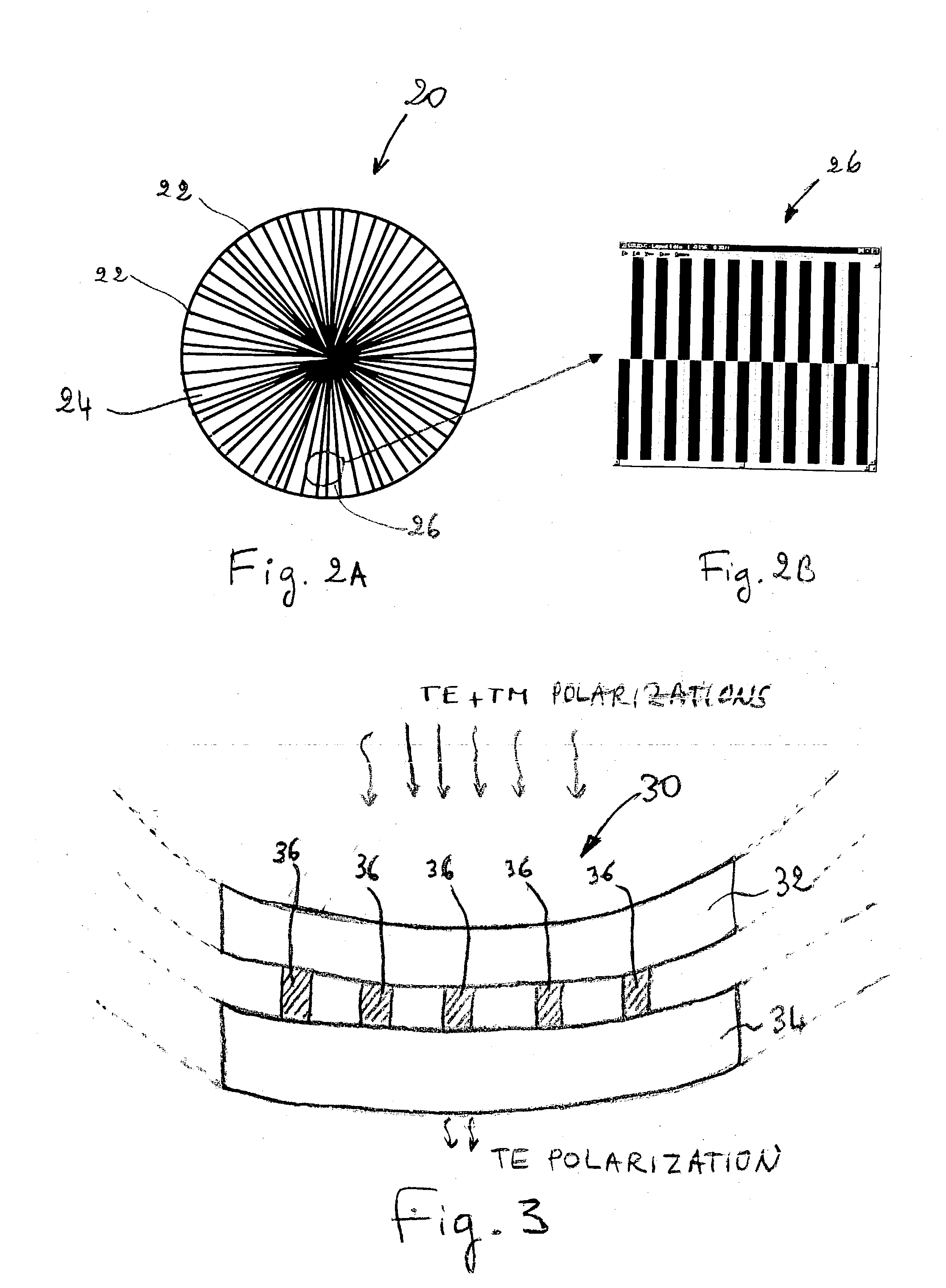Stationary and dynamic radial transverse electric polarizer for high numerical aperture systems
a technology of radial transverse electric polarizer and aperture system, which is applied in the field of optical polarizers, can solve the problems of high na partially coherent system polarization targets that have not been examined, produce similar exposure changes, and tight specifications for illumination polarization of lithography tools
- Summary
- Abstract
- Description
- Claims
- Application Information
AI Technical Summary
Benefits of technology
Problems solved by technology
Method used
Image
Examples
Embodiment Construction
unpolarized immersion lithographic system imaging 50 nm dense lines. The wavelength of use in this example is 193 nm. The immersion fluid used is water with a refractive index of 1.437 (NA=1.437). The air equivalent numerical aperture NA is 1.29. The resist used in this example is Par710 on a matched substrate. The illumination is annular with .sigma.=0.9 / 0.7. FIG. 5 is a plot of the exposure latitude versus depth of focus for comparative Example 1. This plot indicates that the exposure latitude at a depth of focus of 0.0 is approximately 5.6%, which is an unusable level. At other depth of focus the exposure latitude decreases even more which makes an unpolarized light unusable in lithographic system at high NA.
[0080] FIG. 6 shows the process window for a 50 nm dense lines with TE polarized light and immersion optics according to an Example 1 of the present invention. The wavelength of use in this example is 193 nm. The immersion fluid used is water with a refractive index of 1.437 ...
PUM
| Property | Measurement | Unit |
|---|---|---|
| wavelength range | aaaaa | aaaaa |
| wavelength range | aaaaa | aaaaa |
| wavelengths | aaaaa | aaaaa |
Abstract
Description
Claims
Application Information
 Login to View More
Login to View More - R&D
- Intellectual Property
- Life Sciences
- Materials
- Tech Scout
- Unparalleled Data Quality
- Higher Quality Content
- 60% Fewer Hallucinations
Browse by: Latest US Patents, China's latest patents, Technical Efficacy Thesaurus, Application Domain, Technology Topic, Popular Technical Reports.
© 2025 PatSnap. All rights reserved.Legal|Privacy policy|Modern Slavery Act Transparency Statement|Sitemap|About US| Contact US: help@patsnap.com



